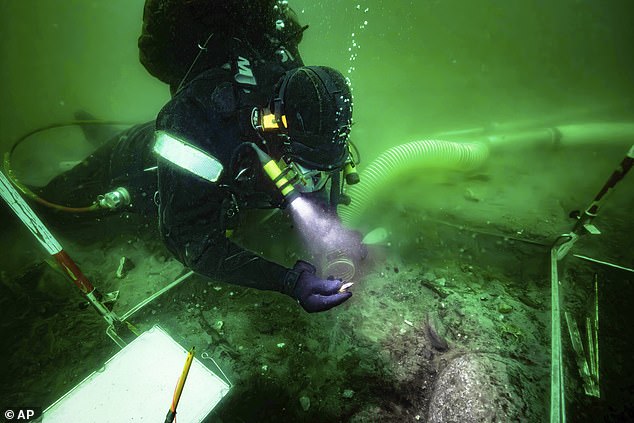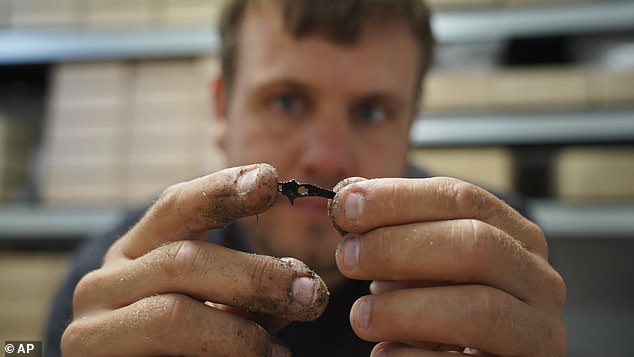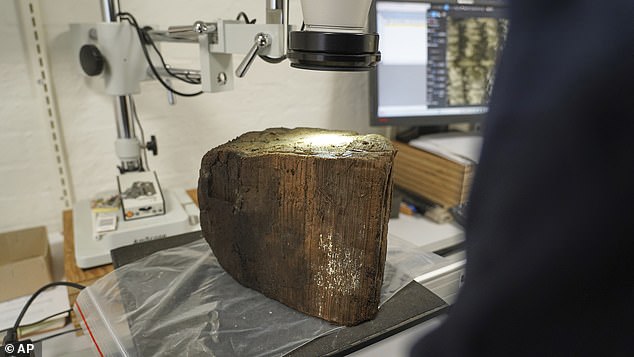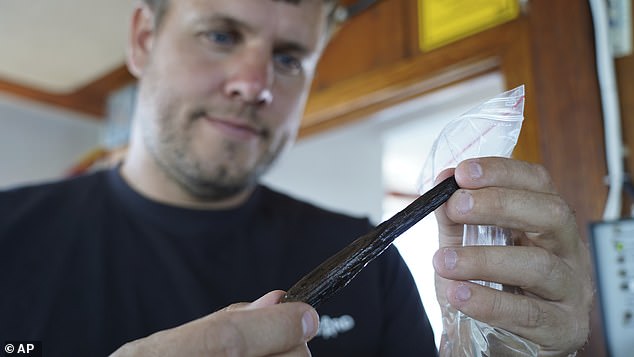Archaeologists have discovered an underwater city in Denmark’s Bay of Aarhus, which is being hailed as the Stone Age Atlantis.
The team uncovered animal bones, stone tools, arrowheads, a seal tooth and a small piece of worked wood, likely a simple tool, which they believe indicates a human presence with structured activities.
The researchers have excavated an area of about 430 square feet at the small settlement.
The last ice age ended about 8,500 years ago, and massive ice sheets began to melt.
Sea levels rose rapidly, sometimes by several meters per century, flooding Stone Age settlements and forcing hunter-gatherer communities further inland.
Rising global sea levels dramatically reshaped coastlines, according to underwater archaeologist Peter Moe Astrup, who is leading the excavations.
‘It is like a time capsule. When the sea level rose, everything was preserved in an oxygen-free environment … time just stops,’ he said.
‘We actually have an old coastline. We have a settlement that was positioned directly at the coastline.’

Archaeologists have discovered a lost city below the sea, hailed as the Stone Age Atlantis

Underwater archaeologist Peter Moe Astrup inspects a tiny animal bone, unearthed at an 8,500-year-old Stone Age coastal settlement found in the Bay of Aarhus in Aarhus, Denmark
This summer, divers carefully descended about 26 feet below the waves near Aarhus, Denmark’s second-largest city, using specialized underwater vacuums to collect delicate artifacts without damaging them.
The team combed the site foot by foot, documenting each find in detail, allowing researchers to reconstruct the layout and daily life of a settlement frozen in time.
The discovery is part of a $15.5 million six-year international project to map parts of the seabed in the Baltic and North Seas.
Its goal is to explore sunken Northern European landscapes and uncover lost Mesolithic settlements as offshore wind farms and other sea infrastructure expand.
Most evidence of such settlements has previously been found inland from the Stone Age coast, but the recent discovery is among the first to be uncovered below the sea.
Moe Astrup said he and his team hope further excavations will find harpoons, fish hooks or traces of fishing structures.
The site offers a rare glimpse into how Mesolithic people interacted with their environment.
Living directly on the coastline, the inhabitants would have relied heavily on fishing, hunting seals and gathering plants from nearby forests.

The team found submerged trees on the seabed, allowing them to date the settlement to around 8,500 years old
The preservation of organic materials such as wood and nuts allows researchers to understand not just what people made and ate, but also how they adapted tools and techniques to survive in a changing landscape.
Excavations in the relatively calm and shallow Bay of Aarhus and dives off the coast of Germany will be followed by later work at two locations in the more inhospitable North Sea.
Thousands of years ago, the sea-level rise also submerged a vast area known as Doggerland, which connected Britain to continental Europe and now lies beneath the southern North Sea.
To track how quickly the waters rose, Danish researchers are using dendrochronology, the study of tree rings.
Submerged tree stumps preserved in mud and sediment can be dated precisely, revealing when rising tides drowned coastal forests.

The team uncovered animal bones, stone tools, arrowheads, a seal tooth and a small piece of worked wood, likely a simple tool (pictured)
‘We can say very precisely when these trees died at the coastlines,’ Moesgaard Museum dendrochronologist Jonas Ogdal Jensen said as he peered at a section of Stone Age tree trunk through a microscope.
‘That tells us something about how the sea level changed through time.’
As today’s world faces rising sea levels driven by climate change, the researchers hope to shed light on how Stone Age societies adapted to shifting coastlines more than eight millennia ago.
‘It´s hard to answer exactly what it meant to people,’ Moe Astrup said. ‘But it clearly had a huge impact in the long run because it completely changed the landscape.’
Sea levels rose by a global average of around 4.3 centimeters (1.7 inches) in the decade up to 2023.












